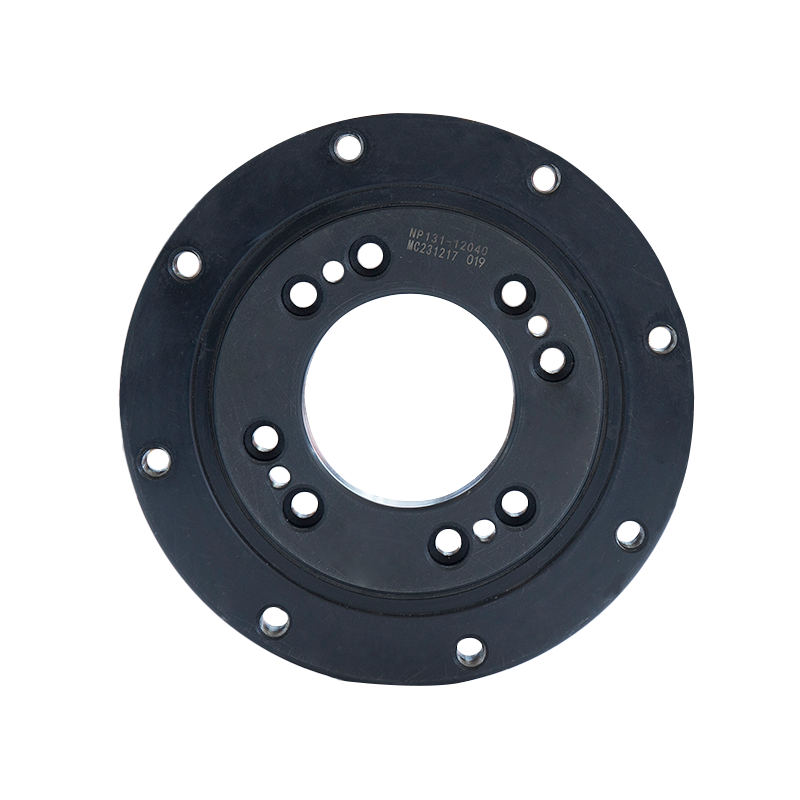How does the preload applied to a single-row cross-roller slewing bearing affect its load capacity and precision?
 2025.02.14
2025.02.14
 Industry news
Industry news
The preload applied to a single-row cross-roller slewing bearing plays a critical role in determining its load capacity , precision , and overall performance. Preload refers to the controlled amount of axial force applied to eliminate clearance between the rollers and races, ensuring that there is no unwanted play or backlash in the system. Below is an explanation of how preload affects these key aspects:
1. Load Capacity
Increased Load Capacity : Applying an appropriate preload ensures that the rollers are always in contact with both the inner and outer raceways, which improves load distribution across all rollers. This results in better load sharing and increases the overall load-carrying capacity of the bearing.
Risk of Overloading : Excessive preload can lead to higher contact stresses between the rollers and raceways, potentially reducing the bearing's load capacity and service life. It is essential to strike a balance between eliminating clearance and avoiding excessive force.
2. Precision
Elimination of Backlash : Preload removes any free play or clearance in the bearing, which enhances rotational accuracy and repeatability. This is particularly important in applications requiring high precision, such as robotics, CNC machines, and medical equipment.
Improved Stiffness : Preloaded bearings exhibit higher stiffness, meaning they resist deformation under load more effectively. This contributes to better positional accuracy and reduced deflection during operation.
3. Friction and Wear
Increased Friction : While preload improves performance, it also increases friction between the rollers and raceways. Higher friction can lead to increased heat generation and energy consumption, especially under heavy loads or high speeds.
Wear Considerations : Excessive preload can accelerate wear on the rollers and raceways, shortening the bearing's lifespan. Proper lubrication and careful selection of preload values are crucial to mitigate this risk.

4. Vibration and Noise
Reduced Vibration : Preload minimizes vibrations caused by clearance or backlash, resulting in smoother and quieter operation. This is particularly beneficial in applications where noise reduction is important, such as in consumer electronics or medical devices.
Improved Stability : By stabilizing the rollers within the raceways, preload reduces the likelihood of roller skidding or misalignment, further enhancing bearing performance.
5. Temperature Effects
Thermal Expansion : As operating temperatures rise, materials expand, which can increase the effective preload on the bearing. Designers must account for thermal expansion when specifying preload values to avoid overloading the bearing at elevated temperatures.
Cooling Requirements : Bearings with higher preloads may require additional cooling measures to manage heat buildup, especially in high-speed or heavy-load applications.
6. Application-Specific Considerations
High-Precision Applications : In applications like robotics or optical systems, moderate preload is often used to achieve the highest possible precision without compromising longevity.
Heavy-Duty Applications : For construction equipment or wind turbines, higher preload values may be necessary to handle extreme loads, but this must be balanced against increased friction and wear.
Dynamic Loads : In scenarios with fluctuating or cyclic loads, preload helps maintain consistent performance by preventing roller slippage or misalignment.
7. Methods of Applying Preload
Spring Preload : Springs are used to apply a constant axial force, ensuring consistent preload even as the bearing wears over time.
Spacer Preload : A fixed spacer is placed between the bearing races to set the preload value during assembly. This method is simpler but less adjustable than spring preload.
Threaded Adjustments : Some designs allow for adjustable preload using threaded components, enabling fine-tuning of the bearing's performance.
8. Best Practices for Preload Selection
Application Requirements : Preload should be tailored to the specific needs of the application, considering factors such as load type (radial, axial, or combined), speed, and required precision.
Material Compatibility : The choice of materials for the rollers and raceways influences the optimal preload value, as harder materials can tolerate higher preloads without excessive wear.
Testing and Validation : Manufacturers often conduct testing to determine the ideal preload for a given bearing design and application, ensuring optimal performance and longevity.












